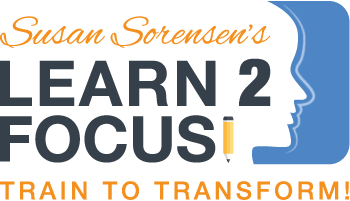5 Things You Should Know About Language Impairment and Fast ForWord
/If you’re a parent, you probably know how important it is for you to talk to your baby from day one. Just by listening to your conversations, your baby starts developing an important foundation for language, picking up speech patterns and words to use down the road. Language specialists says that this is a naturally acquired skill, just like walking. They say that all your baby needs to hear is language being spoken, and when the time comes, they will start talking!
However, there are some kids who develop language slowly – it doesn’t come naturally to them, and they grow up with language impairments. Today, I wanted to share a blog about how Dr. Paula Tallal, one of the premier cognitive neuroscientists in the nation, discovered that learners with no language difficulties could sequence two sounds very easily no matter how quickly they occurred in time. She found that children with language problems had difficulty sequencing sounds only when they occurred quickly, not slowly.
She helped develop Fast ForWord, a program that we offer here at Learn 2 Focus. The program has two exercises called Sky Gym and Jumper Gym, which can help these children overcome language learning obstacles through sequencing. Here are 5 important things you should know about these exercises:
1. Sky Gym and Jumper Gym improves listening accuracy and auditory sequencing. Listening accuracy is the speed at which the child identifies and understands rapid, successive changes in sound. Auditory sequencing is the ability to recognize and remember the order in which a series of sounds is presented.
2. The purpose of these exercises is to correctly identify sequences of two to five sound sweeps.
3. These exercises are two of the hardest exercises in Fast ForWord, so don’t worry if your child struggles at first!
4. In the 1990’s, Tallal and fellow researcher Dr. Merzenich began discussing how to improve the ability to understand spoken language if you had specific language impairment, auditory processing problems or dyslexia. Dr. Tallal wondered if a device could be worn that would stretch out the speech to make it longer. Dr. Merzenich told her that the brain could actually be trained to learn to process these rapid sounds by using the principles of neuroplasticity. These conversations led to the early trials of Fast ForWord at Rutgers in 1994 and 1995.
5. Typically, if a participant is struggling with these exercises, it means they really do need to be doing Fast ForWord. That’s because it means their brain is not able to process rapid information quickly, efficiently or accurately. Remember, if you and your child keep at it, your child is guaranteed to improve the speed of his auditory processing skills.
You can read the entire article here:
https://www.scilearn.com/blog/how-to-improve-auditory-processing-speed-using-fast-forword?utm_source=feedblitz&utm_medium=FeedBlitzRss&utm_campaign=scilearn

